There are many misconceptions about the benefits of dairy consumption. While it’s true that milk is a convenient source of protein, fat, vitamins and minerals, not all milk is created equal — and some types of milk are healthier for humans than others.
This article will explain why certain types of milk are better than others, as well as why you should avoid most dairy alternatives (including nut and grain-based milks).
I’ll also answer the following questions:
- Is milk good for you?
- What are the benefits and risks of consuming raw milk?
- What is A2 milk, and is it better than regular (A1) milk?
- What are healthy alternatives to regular cow’s milk?
- Are products like almond milk and oat milk healthy?
Before we get into the nitty-gritty, let’s cover some basics that are important for understanding the bigger picture. Without this knowledge, you might have trouble determining whether or not you should include dairy milk in your dietary lifestyle.
At the end of the article, I’ll recommend the best dairy products (including milk, butter and cheeses) for a healthy lifestyle and point out the ones you should avoid.
Why Milk Is Crucial for Newborns

Milk, and in particular a type of “first milk” called colostrum, is crucial for the development of newborns because it contains all the nutrients — including fatty acids, protein, carbohydrates, vitamins, minerals and growth factors — babies need to thrive.
Without an adequate supply of milk, there is an increased risk of developmental problems and health issues (such as allergies) later in life.
However, studies have shown that humans undergo specific metabolic changes when they’re weaned from the breast. For example, once babies stop consuming their mother’s milk, their lactase production decreases. That’s significant, because lactase is the enzyme that breaks down milk sugar (lactose).
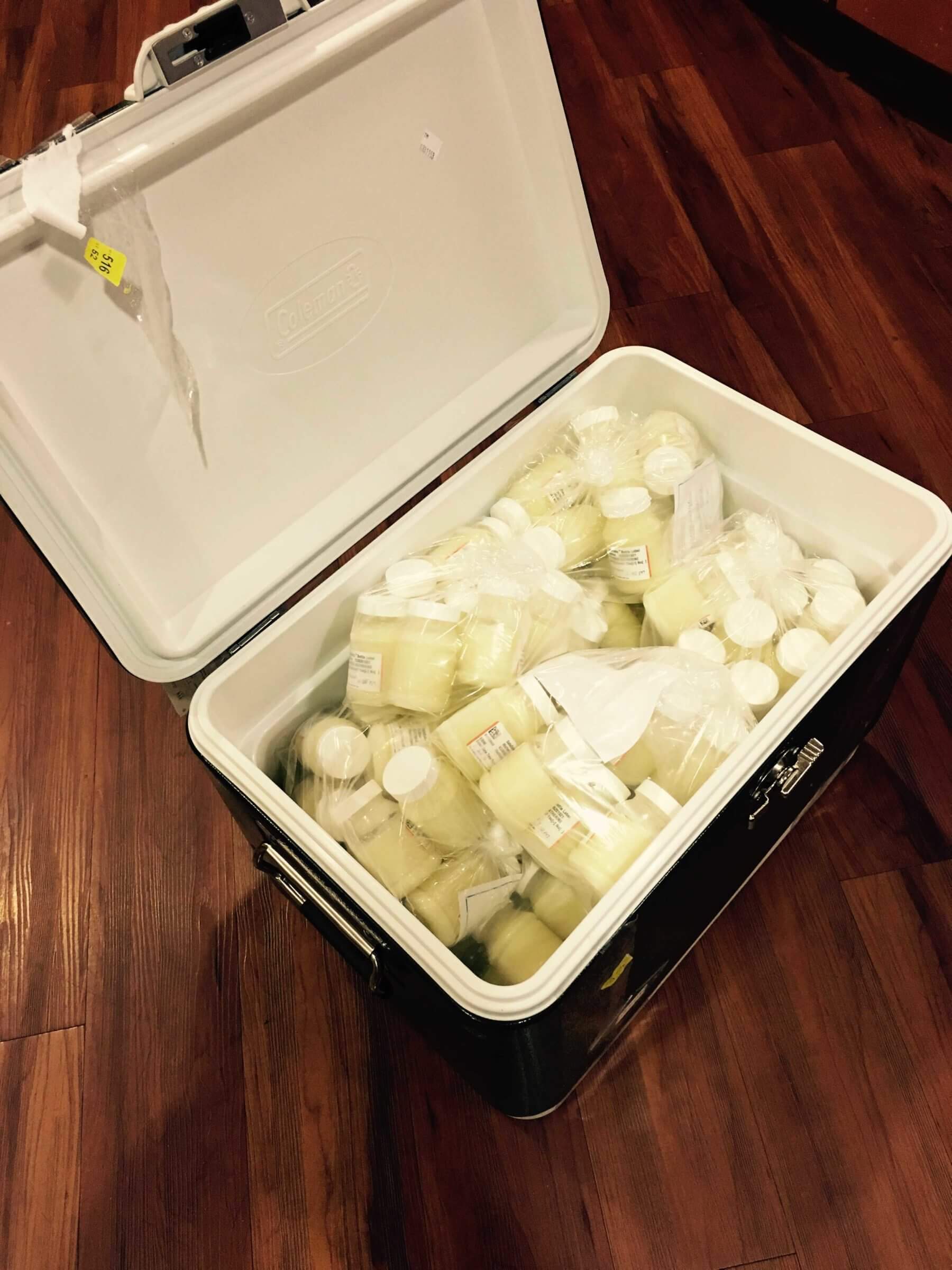
As a result, it becomes more difficult to digest the lactose in milk (and other dairy products) as you grow older. This can lead to gastrointestinal issues like cramping, bloating and diarrhea. That’s the main reason why many adults experience mild to severe GI issues after consuming dairy products.
So the question is this: are adult humans supposed to consume milk? And more specifically, should adult humans consume the milk of other mammals, which has a slightly different nutrient composition than human milk?
Unfortunately, there is no simple “yes” or “no” answer. It depends on several factors, as we’ll discuss throughout this article.
Benefits of Drinking Milk
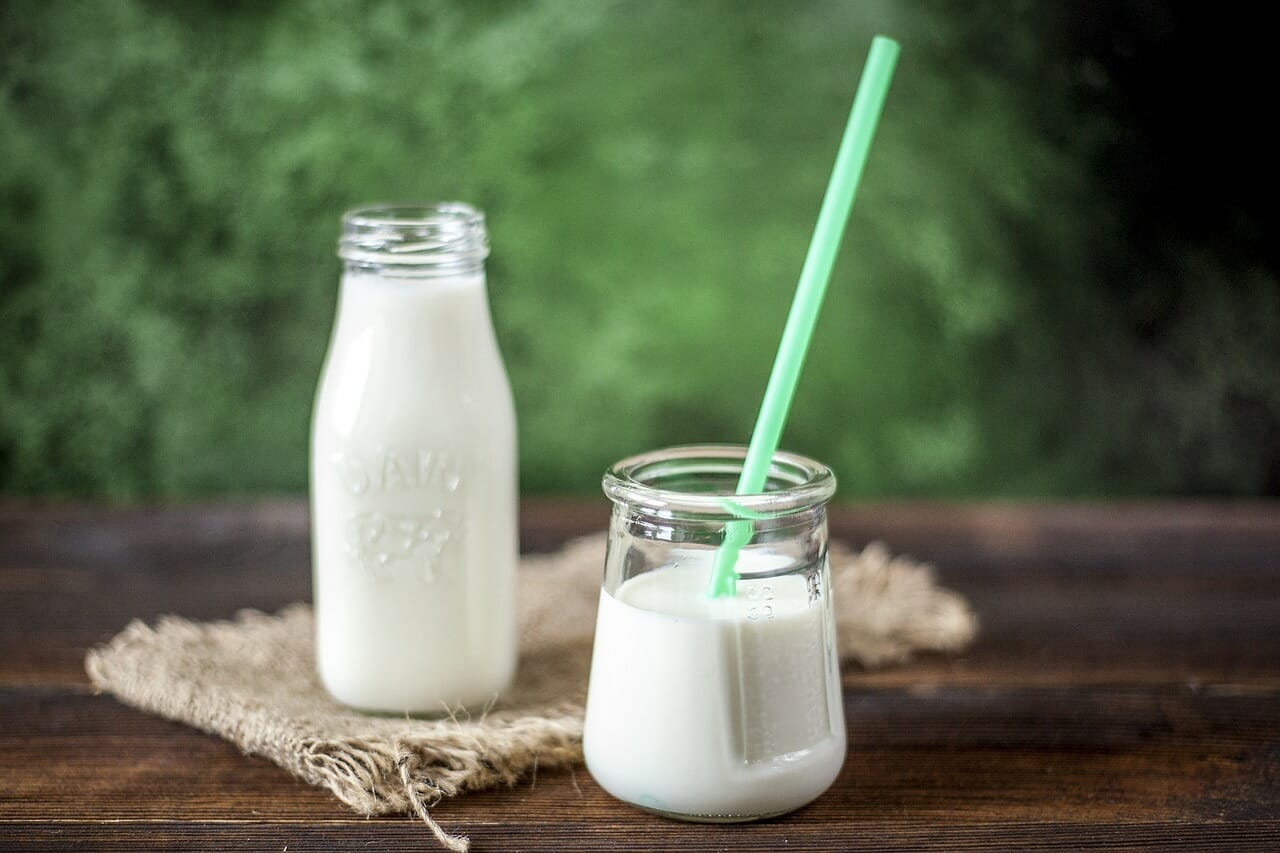
Milk proponents are quick to point out that whole cow’s milk is an excellent source of many macronutrients and micronutrients, including protein, fat, carbs, vitamins and minerals. The convenience of milk’s complete nutritional profile, combined with its taste, are two of the reasons why it’s such a popular food among kids and adults alike.
For example, a serving of whole milk contains 8 grams of protein, 8 grams of fat, and 12 grams of carbs (sugar). It’s also an excellent source of calcium, phosphorus, potassium and several B vitamins, including B12 and riboflavin.
Protein is a structural macronutrient that is essential for various vital functions in the human body, including tissue growth and repair. Fat and carbs are energy sources, but the former is also vital for proper cell function, the creation of hormones, and many other metabolic processes.
Another reason many people make dairy a regular part of their diet is because it’s a good source of calcium, an essential mineral needed to maintain healthy bones and teeth.
Just keep in mind that your body also needs vitamin K (specifically, vitamin K2) to shuttle calcium into bone and tooth tissue; that’s why it’s critical to also consume foods that are high in K2, like organ meat (and especially beef liver).
The bottom line is that milk is a convenient food source for many of the essential nutrients humans need to thrive.
Potential Issues Associated With Milk Consumption
In addition to the various health benefits of milk, there are numerous problems associated with dairy consumption.
These include:
- Milk has both fat and carbs, which is less than ideal for adults (see the next section for more context about why).
- All milk contains lactose (milk sugar) that most adults are sensitive or intolerant to.
- Most of the milk consumed in this country is highly-processed through pasteurization and homogenization, which alters its chemical structure and removes beneficial bacteria.
- Most cow’s milk contains a type of inflammatory protein (casein beta A1).
So let’s talk about these issues and the steps you can take to mitigate them.
Milk Contains Both Fat and Carbs
Most foods in nature have either protein, fat or carbs, or a combination of two of those.
Milk is unique because it contains protein, fat and carbs.
That’s because newborns need significant amounts of all three macronutrients due to their rapid growth. But adults have a different metabolism than newborns, and dual-fueling with both fat and carbs at the same time can have undesirable consequences.
To explain the problem, you need to understand the primary role of protein, fat and carbs in human metabolism.
Protein is a structural nutrient used to grow and repair cells, among other things. Protein is only used for energy in the absence of carbohydrates, through a process called gluconeogenesis (which entails the creation of glucose from non-carbohydrate sources).
On the other hand, both carbs and fat are sources of energy. So if you fuel yourself with carbs or fat, the body will burn what it needs to meet its energy demands and store the surplus as (body) fat. The “problem” is that it’s much easier for the body to convert carbs to glucose and use that for energy instead of burning dietary fat.
Consequently, if you consume carbs and fat in the same meal, your body will use the carbs first. If the carbs meet your energy demands, your body won’t burn the fat you ate. Instead, it will store that fat (probably around your midsection).
That’s especially true if you’ve been maintaining a high-carb diet or are overweight; both are an indication that your body is inefficient at burning fat for energy, which can be described as metabolic inflexibility. (You can learn more about this topic in my article on metabolic health.)
If you fall into those categories and suffer from other metabolic disorders, including cancer, Type 2 diabetes, cardiovascular disease, autoimmune issues and/or Alzheimer’s (to name a few), regular milk might not be the ideal food for you.
Lactose (Milk Sugar)
Most adults don’t produce enough lactase (the enzyme that breaks down lactose) to fully digest milk and non-aged or fermented dairy products.
Signs that you suffer from lactose intolerance or sensitivity include bloating, cramping, gas, constipation or diarrhea after drinking milk or eating soft cheeses.
If you enjoy milk but don’t handle lactose well, you can take lactase supplements or choose other dairy types with no (or only residual amounts of) milk sugar.
For example, aged cheeses have relatively low amounts of lactose because the bacteria that are part of the aging process consume it. The same principle applies to kefir; the bacteria that make up the kefir grains convert lactose into other sugars, making it a suitable alternative for people with lactose intolerance.
You can also find “lactose-free” milk at some grocery stores. Keep in mind that milk labeled as “lactose-free” does actually contain lactose, but it also has sufficient amounts of added lactase to help your body metabolize the milk sugar.
Casein Protein
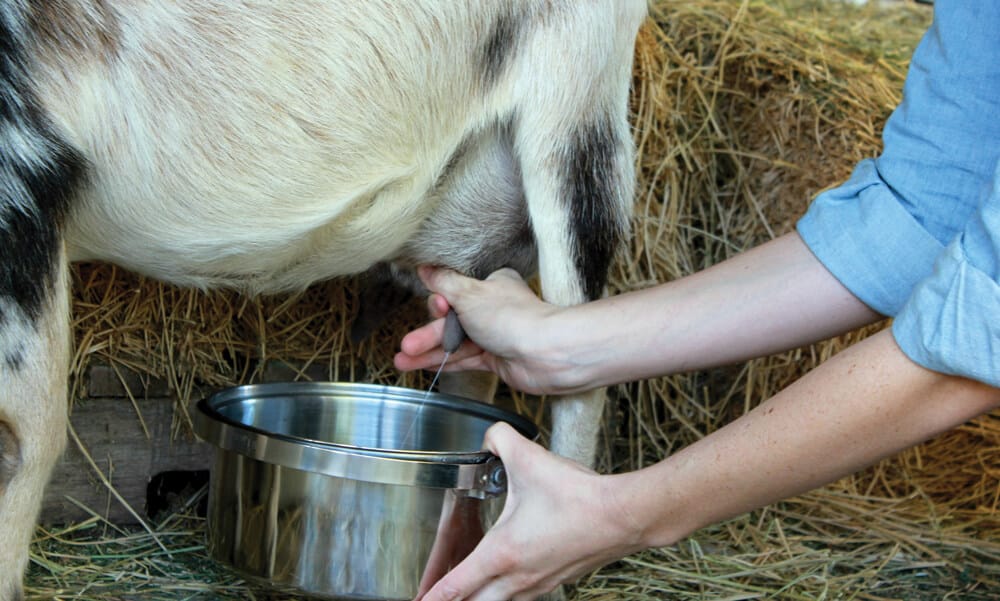
Casein is one of milk’s proteins. The problem with casein is that its peptides are structurally similar to the inflammatory protein gliadin, which is found in certain grains (such as wheat).
There are two types of casein: casein beta A1 and casein beta A2. Most of the dairy products consumed in the United States have both types of casein.
Studies have shown that casein, and casein beta A1 in particular, has strong inflammatory properties that can lead to long-term health complications including metabolic and autoimmune diseases. As a result, patients with celiac disease (CD) who are on a gluten-free diet, but who consume dairy products, might still have GI issues because of the proteins in dairy.
As A1 protein is broken down during digestion, a substance called beta-casomorphin-7 (BCM-7) is released. BMC-7 is an opioid peptide, and recent research in animal models has found that it has mild but similar gastrointestinal effects as more potent opioids, such as those used in pain treatment.
According to a 2017 NIH paper:
“Rodent studies have consistently reported opioid-mediated reduction in the rate of gastric emptying and increases in gastrointestinal transit time after the consumption of commercial casein […].”
When the researchers refer to “gastric emptying” and “increase[d] gastrointestinal transit time,” they’re talking about bloating and constipation, which can lead to stomach and abdominal pain.
Additionally, there is evidence suggesting that the consumption of dairy products containing casein beta A1 may significantly and negatively affect the gut microbiome, which may in turn increase the risk of a variety of both short-term symptoms and chronic diseases.
As a result of this growing body of evidence demonstrating the potential adverse health effects of casein beta A1 consumption, dairy farmers have started offering products that contain primarily casein beta A2 protein.
This is possible because certain types of cows have slightly different genetic profiles, and therefore produce more of one protein than the other.
Milk products containing predominantly A2 protein will not induce the opioid effect described above and may be easier to digest — even among people who are lactose intolerant. This type of milk is usually available at Whole Foods and some other supermarkets, although it’s quite difficult to find other A2 dairy products (such as cheese, yogurt and half and half) in the United States.
It’s worth noting that both goat milk and camel milk contain only casein beta A2, and may provide an overall healthier alternative to cow milk. I frequently opt for camel milk, and one of my favorite brands is Desert Farms.
Hormones in Milk
Many conventional dairy farms use synthetic hormones to increase their cows’ milk production. Unfortunately, some of those hormones can end up in the milk, causing disruptions in the human endocrine system.
The good news is that many consumers have become aware of the health issues associated with exposure to hormones from dairy products, triggering some farmers to avoid their use. If in doubt, make sure the product label clearly states that no hormones were used in the production of the milk.
My recommendation is to only buy milk from 100% grass-fed cows that were raised regeneratively and without the use of hormones or other pharmaceuticals.
Herbicides and Pesticides in Milk
Another issue with milk harvested from conventionally-raised cows (that were fed a grain-based diet) is pesticides.
Most crops in the United States are contaminated with toxic chemicals, such as synthetic herbicides and pesticides. Some of those chemicals, including glyphosate, have been shown to increase the risk of developing cancer by 41%.
The best way to avoid exposure to such toxic chemicals is to only buy milk from 100% grass-fed cows.
Grain-Fed vs. Grass-Fed Milk
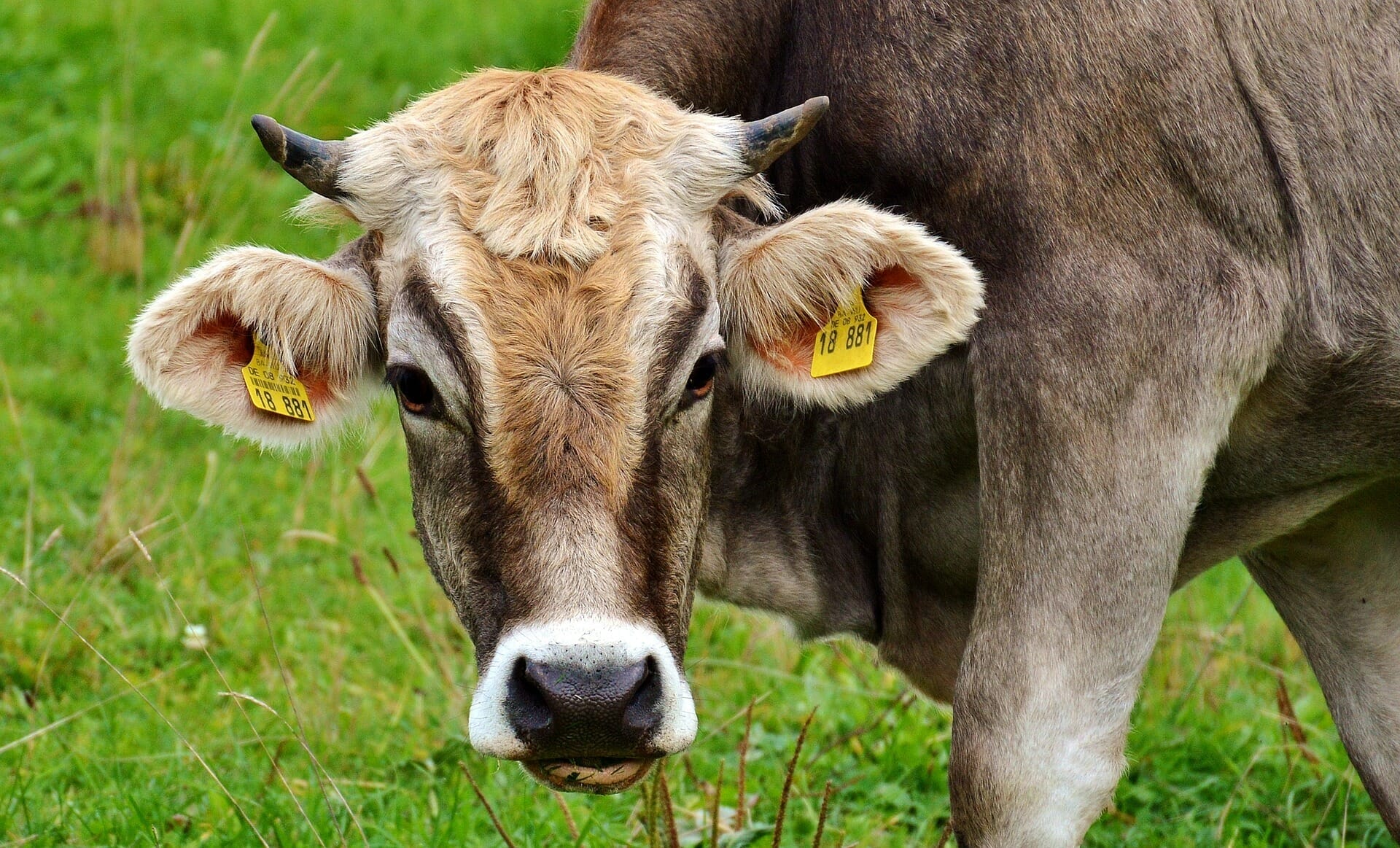
The natural diet of cows is grass.
In other words, cows aren’t supposed to eat grains. It makes them fat, and it causes a host of health issues that might require medication (including antibiotics).
Plus, the spread of certain bacterial strains, such as E. coli O157:H7, was mostly caused by feeding cattle an inappropriate diet of grains — a result of how the feed changes the cows’ digestive patterns.
While pasteurization kills off those types of bacteria, the potential for contamination is an important consideration when buying raw milk.
For all these reasons, I highly recommend staying away from milk derived from grain-fed cows.
Additionally, grass-fed milk has a much better nutritional profile than conventional milk. For example, studies have shown that “grassmilk” has 147% more anti-inflammatory omega-3 and 52% less inflammatory omega-6.
Raw vs. Pasteurized and Homogenized Milk
An important aspect of discussing the pros and cons of consuming milk and other dairy products is their processing method — or lack thereof.
Most of the milk the average American consumes is a highly-processed product that has been chemically changed (homogenized) and stripped of beneficial bacteria (pasteurized) to make the final product “safer” and more convenient.
The problem is that denaturing milk changes its nutritional properties and potential health benefits.
I firmly believe that most industrial processing methods — regardless of the food in question — degrade the quality and nutritional value of the food and, in some cases, even render the food unhealthy.
Processed milk is no exception, because pasteurization kills all the bacteria (beneficial and harmful), and homogenization changes the size of the fat droplets (thus altering how they’re absorbed and digested).
Raw milk is full of heat-sensitive micronutrients, including vitamin C, beneficial bacteria and important cofactors, enzymes and proteins that assist in the absorption of folate, vitamin B12, vitamin B6, and iron that are destroyed during pasteurization.
So why are we heating milk if it kills so many of its nutrients? The idea is to also kill harmful bacteria that could make you sick. While that sounds like a great idea, the truth is that the risk of getting sick from consuming raw milk is incredibly low. That’s particularly true if the raw milk in question came from grass-fed cows that are much less likely to breed dangerous strains of E. coli than their grain-fed cousins.
As far as I’m concerned, the benefits of consuming raw dairy significantly outweigh the risks (if you plan on making milk part of your diet). Anecdotally, I can say that my family and I have been drinking raw milk for over a year without any issues.
For what it’s worth, there are no purported safety benefits to homogenizing milk — many people just don’t like a layer of cream on the top of their milk carton.
All things considered, I recommend buying raw A2 milk if you can find it. Here in Georgia, the sale of raw milk is illegal unless the product is labeled as pet food. I think that’s ridiculous, but that’s what the farm we buy from has to do.
If you can’t find raw milk or are afraid of getting sick, I recommend buying regular A2 milk and making your own kefir. Doing so will at least put some of the beneficial bacteria that is lost during the pasteurization process back into the milk.
Types of Milk We Consume in the Kummer Household
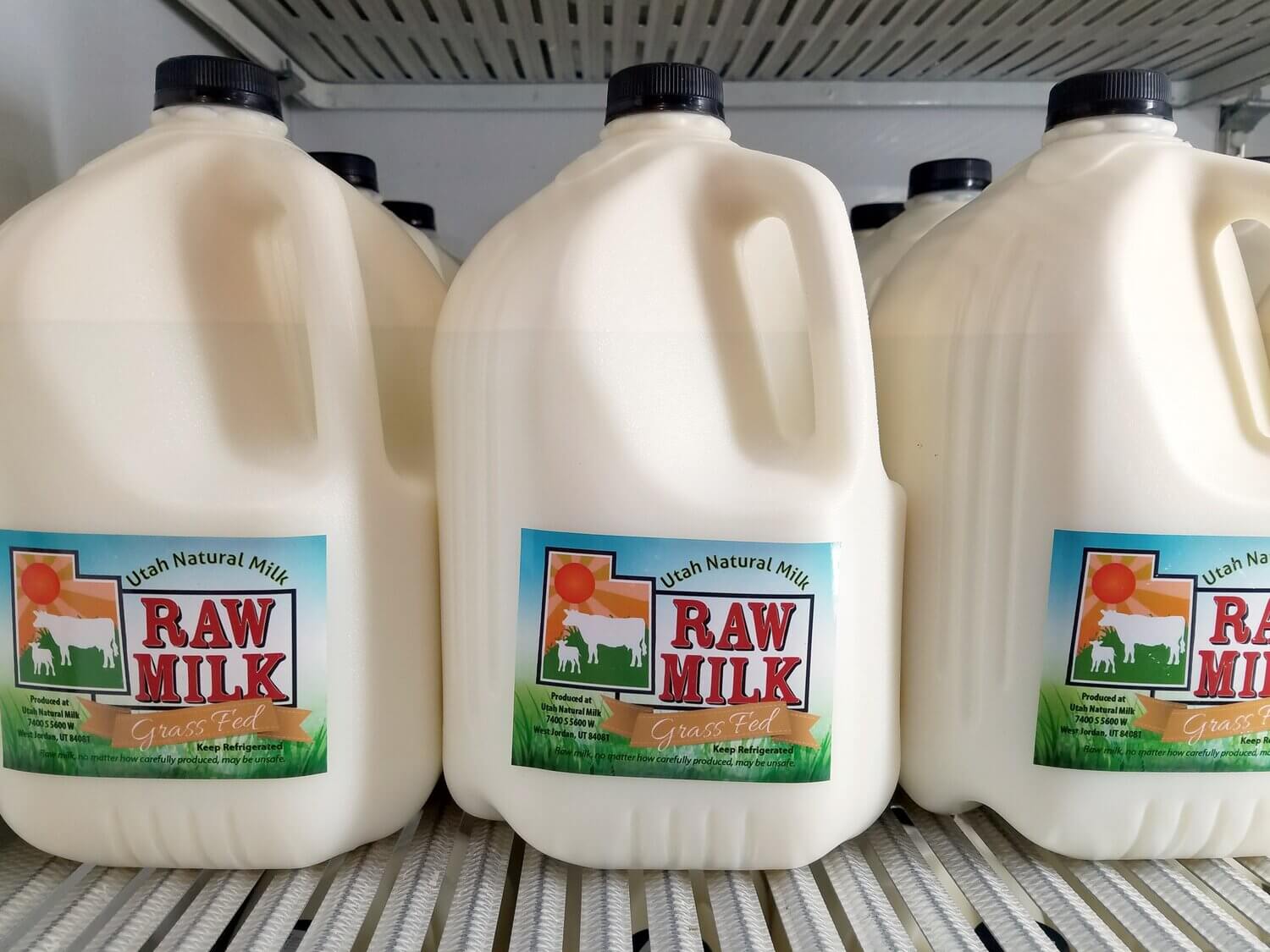
Now that you have a better understanding of the pros and cons of consuming milk, below is a list of dairy products that I recommend and consume on a regular basis:
- Raw milk from 100% grass-fed Jersey cows.
- Raw milk from 100% grass-fed goats, sheep and camels.
- Kefir made from 100% grass-fed A2 milk.
- Heavy cream from 100% grass-fed A2 milk.
The problem is that finding these products in regular grocery stores can be challenging. If you can’t find them, here are your next best options, depending on your metabolic health:
- 100% grass-fed milk (pasteurized, non-homogenized).
- 100% grass-fed milk (pasteurized, homogenized).
- Regular kefir.
- Heavy cream from 100% grass-fed milk.
Remember that Jersey cows, goats, sheep and camels produce A2 milk.
Types of Milk to Avoid
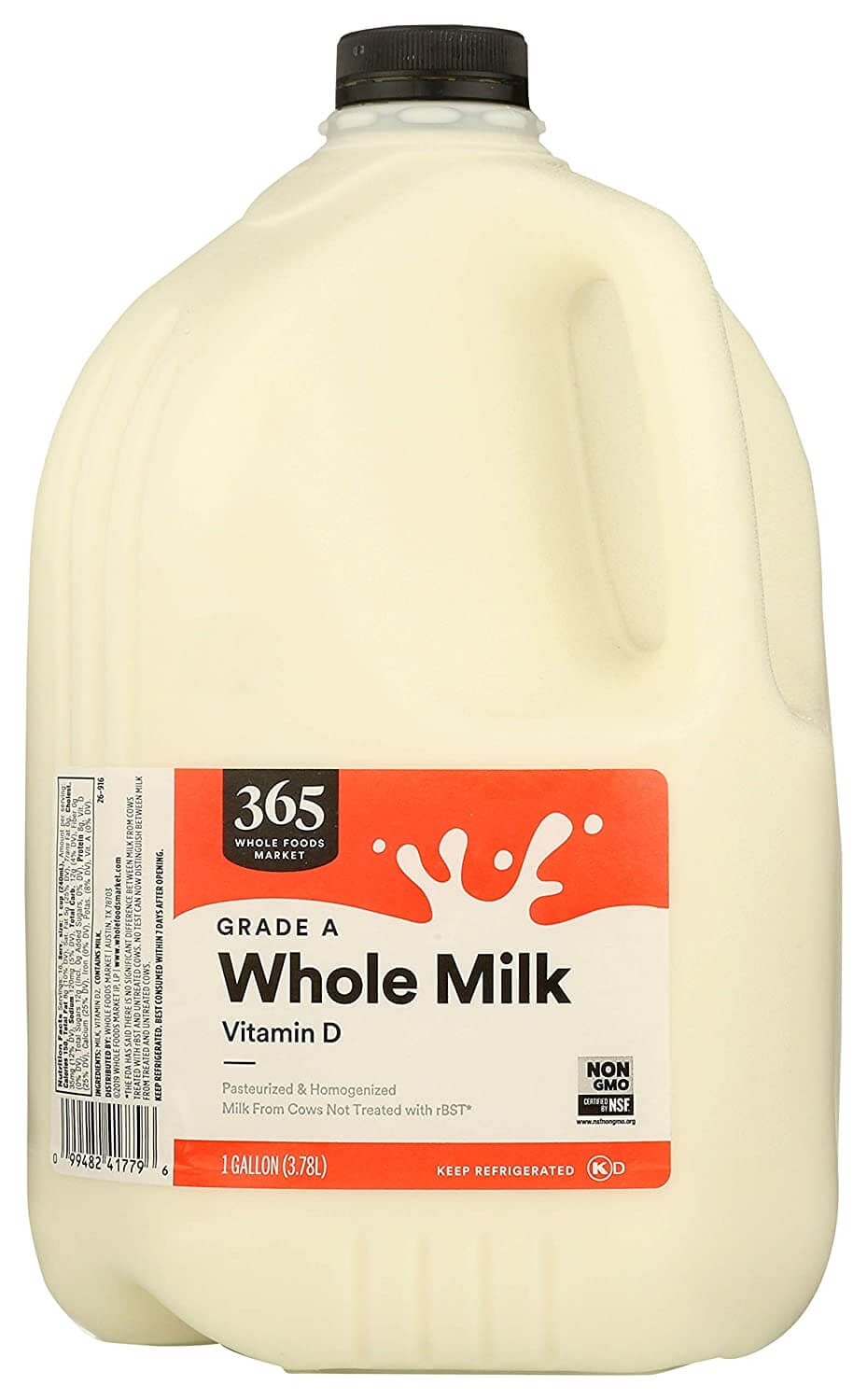
The list below includes an incomplete list of some of the over-processed milk products I would avoid due to their lack of nutritional value:
- Milk from grain-fed cows.
- Ultra-pasteurized milk.
- Low-fat milk.
- Chocolate milk and other flavored milk products.
Butter, Cheese and Yogurt Recommendations
I love cheese and yogurt and apply a similar selection criteria when buying those dairy products as I do when buying milk.
So here is what I recommend:
- Raw cheeses made from 100% grass-fed A2 milk.
- Butter from 100% grass-fed A2 milk.
- Plain yogurt made from 100% grass-fed A2 milk.
If you can’t find products that meet those criteria, here are your next best options:
- Aged cheese made from 100% grass-fed milk.
- Aged goat or sheep cheese.
- 100% grass-fed butter.
- Plain yogurt made from 100% grass-fed milk.
Much as with milk, I’d try to avoid everything else, including:
- Cheese made from regular milk.
- Yogurt made from regular milk.
- Any flavored dairy products with added sugars (kefir, yogurt, etc.).
- Products that look and/or taste like butter, including margarine and plant-based spreads.
A Word on Plant-Based Milk Alternatives
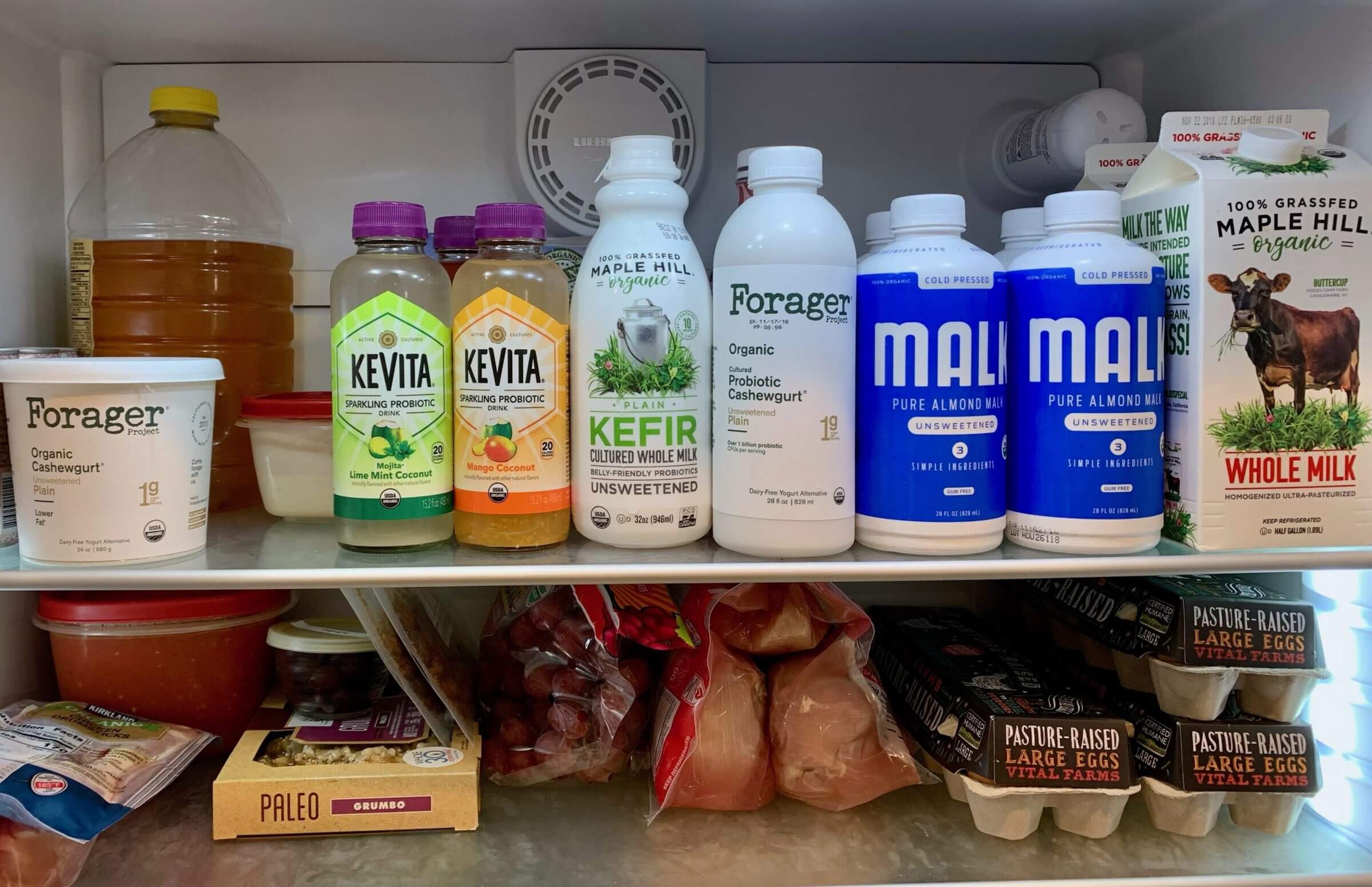
Plant-based alternatives to traditional dairy products — such as nut milks and vegan cheeses — have become incredibly popular over the last few years, especially among health-conscious consumers.
I have to admit that until a few years ago, we also regularly consumed almond milk and non-dairy cheese alternatives because we thought we were doing the right thing for our bodies.
Since then, I’ve realized that all of those products contain ingredients that have the potential to negatively impact our health — even more so than those in regular dairy products.
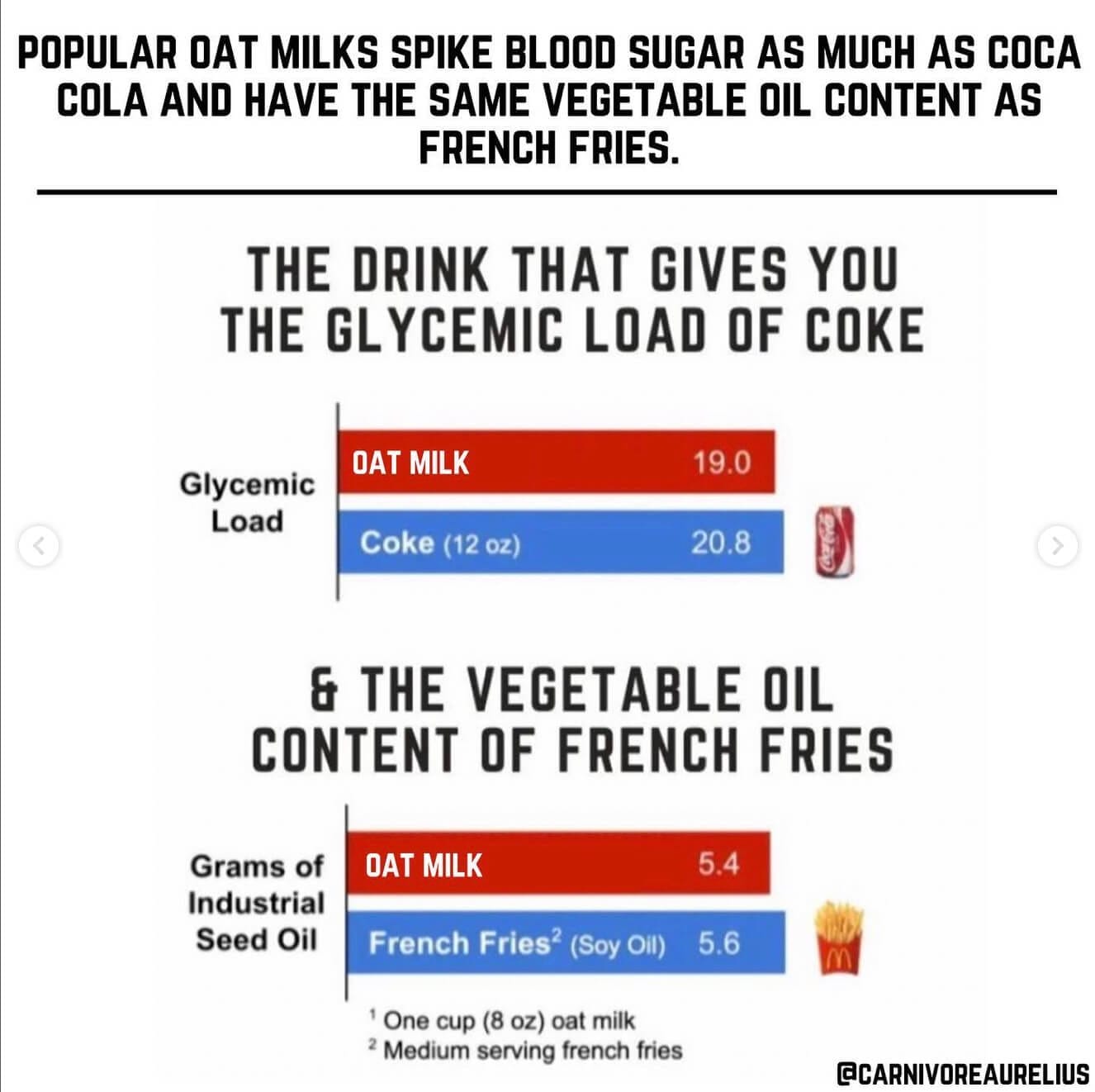
I’m specifically referring to the antinutrients found in nuts, seeds and grains, seed oils, gums, soy and synthetic vitamins.
As a result, I recommend staying away from products such as:
- Almond milk
- Cashew milk
- Macadamia nut milk
- Oat milk
- Rice milk
- Soy milk
- Vegan cheese
If you’re consuming any of those products because you’re following a plant-based diet to improve your health and help the environment, I encourage you to check out my article on plants vs. meat.
If you’re lactose intolerant, consider eating fermented or aged dairy foods (e.g., kefir or cheeses), or supplementing with lactase. And if you’re sensitive to milk protein, consider buying products that contain only casein beta A2.
If you’ve been opting for fat-free products because you’re concerned about the risk of developing heart disease from saturated fat or cholesterol, rest assured, neither of those things negatively impact your health. Check out this article to learn more about the truth of dietary fats.
The bottom line is that choosing plant-based alternatives instead of dairy products is unlikely to make you healthier.
Facts and Myths About Milk and Dairy
Our understanding of the risks and benefits of dairy, and of milk in particular, have changed significantly over the years. But myths tend to stick around, likely caused by the strong influence of the food industry and our economic reliance on dairy production (not to mention our own psychological stubbornness).
Below are some common facts and myths about milk and dairy.
Fact: Yogurt Is Easier to Digest Than Milk
In the creation of yogurt, manufacturers add certain bacterial cultures to milk to promote fermentation. This is one of the key selling points that has propelled the recent Greek yogurt craze.
These bacteria are capable of breaking down lactose into lactic acid, which is why people with lactose intolerance might not experience gastrointestinal symptoms when they consume yogurt.
Is yogurt good for you? That depends on the type of yogurt. Most of the yogurts found in the supermarket aisle have a ton of sugar. That’s especially true for low-fat yogurts. If you like yogurt, choose a full-fat option made from grass-fed milk that doesn’t contain any added sugar or artificial sweeteners.
Myth: Milk Is Necessary to Reduce Bone Fracture Risk
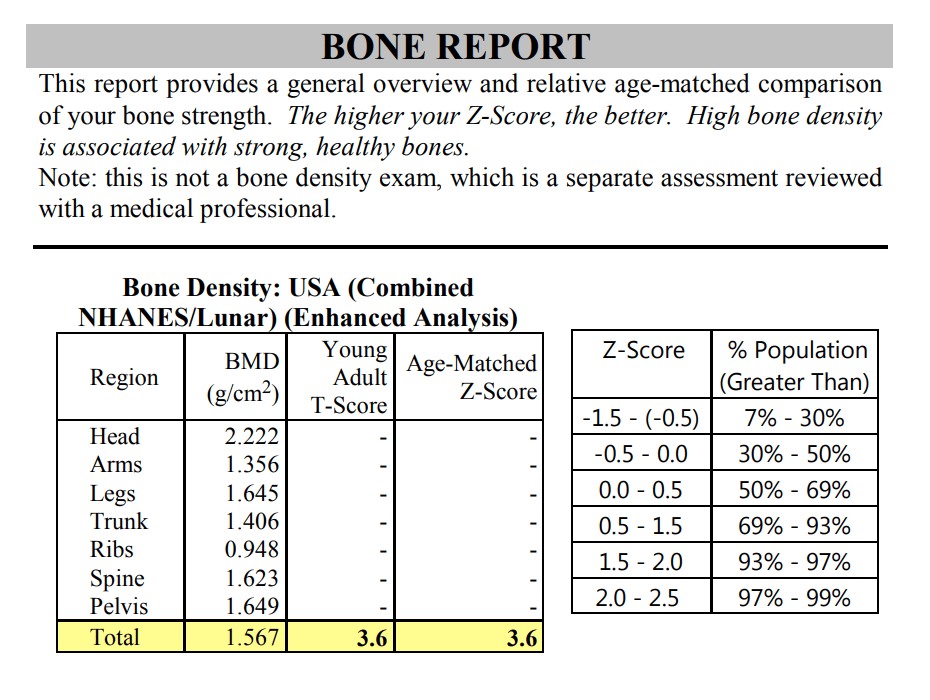
Bone health depends on calcium, and milk has a lot of calcium. But when it comes to nutrition, you can’t take everything at face value.
Observational studies report that osteoporosis and hip fracture are more prevalent in countries with higher calcium intake. This so-called “calcium paradox” shows that consuming calcium-rich foods in and of itself is not enough to reduce bone fracture risk.
Additionally, there is little evidence to suggest that dairy consumption by itself improves bone health.
I underwent my first full-body scan (which tested factors such as body fat, muscle balance and bone density) in 2019. At that time, I barely consumed any dairy.
While one body scan is purely anecdotal and can’t substitute for peer-reviewed research, it was interesting to learn that my bone density placed me in the top percentile for my age group.
However, I should mention that I had been consuming a lot of bone-in fish and bone broth, which are two healthy non-dairy calcium sources.
It’s also worth noting that our calcium needs are lower if we get sufficient magnesium and vitamin K2 from the food we eat. The latter regulates calcium metabolism and helps deposit calcium into our bones, which means that less of the calcium we consume is wasted.
Myth: Milk Causes Kidney Stones
Milk does not cause or increase the risk or size of kidney stones. Most kidney stones consist of calcium-oxalate, which is why many people think the calcium in milk might make them larger. But there’s calcium in your bloodstream all the time, and it doesn’t have anything to do with kidney stones.
So instead of worrying about calcium, we should draw our attention to the second component of kidney stones: oxalate. High intake of this salt can increase the risk of kidney stones. Foods rich in oxalate include peanuts, rhubarb, soy and other plants.
Aside from their high amount of anti-nutrients, that’s one more reason to stay away from most veggies.
Myth: Skim Milk Is Better Than Regular Milk
While it is true that low-fat milk has fewer calories than regular (whole) milk, the difference is insignificant. Besides, cutting out milk fat is not exactly good news. There are several fat-soluble vitamins (including vitamin A and D) in milk that your body can absorb more effectively using the fat in regular milk.
Some studies have even reported that whole milk may reduce the risk of obesity. Hopefully, most of you have realized by now that the low-fat movement was a terrible idea based on a flawed and incorrect concept (the lipid hypothesis) that eating fat causes weight gain and is bad for you.
I would argue that the fat in milk is its healthiest component. Most people have issues with lactose (milk sugar), and some people are allergic to milk’s proteins (casein), but barely anybody has problems with its fat.
So if you like to drink milk, don’t cut out the best part of it by choosing skim milk. In contrast, opt for high-fat dairy products whenever possible.
Fact: Cheese Is Better Than Milk
It’s true that aged cheese has only residual amounts of lactose and is likely safer to consume for people who have low levels of lactase. Additionally, cheese is often also high in saturated fat, which I consider an advantage.
Frequently Asked Questions
No, regular milk isn’t a good source of vitamin D unless it was fortified. The problem is that some manufacturers add the much less-bioavailable vitamin D2 to their products instead of D3.
If you have low levels of vitamin D, I recommend exposing large parts of your skin to sunlight on a daily basis without wearing sunscreen. Alternatively, you can buy a high-quality vitamin D3 supplement that also contains vitamin K2 to improve absorbability.
Milk is an excellent source of calcium, which is important for bone health. To help the body absorb the calcium in milk, it requires vitamin K2. That’s why I recommend consuming foods that have K2, including organ meats.
If you’re concerned about your bone health or want to improve your bone mass, I recommend supplementing with freeze-dried beef liver capsules and making resistance training a regular part of your fitness regimen. To learn more, check out my article on the core pillars of a healthy lifestyle.
Yes, a glass of milk has about 30 mg (10% DV) of cholesterol. However, contrary to popular belief, dietary cholesterol has no negative impact on your heart health. It’s a myth that was busted a long time ago, but which has kept sticking around.
Learn more about why neither saturated fat nor cholesterol are bad for your health.
Cow’s milk is a reasonable source of vitamin A because it contains both retinol (preformed vitamin A) and betacarotene (a precursor to vitamin A).
Interestingly, the more fat there is in milk, the less retinol that milk will contain. For reference, one cup of whole milk contains about 227 IU of retinol and one cup of nonfat milk contains almost 500 IU of retinol.
The daily recommended allowance of vitamin A is 5,000 IU (or 900 mcg RAE).
If you’re concerned about getting enough vitamin A in your diet, check out my list of the best vitamin A supplements (which also covers which ones to avoid).
There are several studies about the association between milk and cancer. The most substantial evidence available suggests a link between dairy and an increased risk of developing prostate cancer or ovarian cancer.
Scientists don’t know the exact relationship between dairy and those types of cancers yet, but we already know that neither the dietary fat nor the calcium in milk is the cause.
The problem is that those are all observational studies that might indicate correlation but which do not prove causation. Still, if you have a family history of those types of cancer, it might be worth removing dairy from your diet.
I doubt it. Frankly, if you’re trying to lose weight, I’d cut out liquid dairy entirely and stick with dairy products that don’t contain carbohydrates (as part of a low-carb or ketogenic diet).
Yes, breast milk contains lactose, which is why nature equipped infants with an enzyme called lactase. Unfortunately, that enzyme becomes less active after weaning the infant from the breast, and most adults lose the ability to break down milk sugar altogether.
Interestingly enough, in Northern Europe and East Africa, we have seen an adaptation to consuming dairy through what is called lactase persistence. In other words, people in those regions appear to continue producing lactase into adulthood, thus enabling them to better digest milk and other dairy products.
For example, raw milk is a staple in some of the remaining hunter-gatherer tribes of East Africa (e.g., the Maasai). Those native tribes thrive on a diet of raw milk mixed with fresh blood as their primary source of nutrients.
Soy contains proteins, endocrine-disrupting chemicals and antinutrients that are not good for the human body. I recommend staying away from any products containing soy.
Cheese is not a natural source of gluten, which is a protein found in some grains. However, manufacturers might produce cheese in facilities that also process foods that contain gluten. So if you have celiac disease, double check the label.
Where to Find Healthy Dairy Products
If you’ve come this far and would like to know more about where to find some of the products I’ve mentioned in this article, check out the list of sources below.
| Product | Source |
|---|---|
| 100% Grass-Fed A2 Milk (Raw) | Carlton Farms, Kind Shepherds Farm |
| 100% Grass-Fed A2 Milk (Pasteurized) | Alexandre Family Farm |
| 100% Grass-Fed Milk (Pasteurized) | Organic Valley, Whole Foods (Amazon) |
| Grass-Fed Camel Milk (Raw, Non-Homogenized) | Desert Farms |
| 100% Grass-Fed A2 Butter | Carlton Farms |
| 100% Grass-Fed Butter | Whole Foods (Amazon), Aldi, Walmart |
| 100% Grass-Fed A2 Yogurt (Non-Homogenized) | Alexandre Family Farm, Whole Foods (Amazon) |
Note that some of the sources listed above are local to my area. If you’re not from Georgia, I recommend you check out your local farmers market or search online for local farms that deliver to your area and see if they offer raw A2 dairy.
Wrap-Up: Milk Is Mostly Good for You
When I started on the paleo diet in 2015, I stopped consuming most dairy products — especially milk. A few years later, I embraced a ketogenic diet and began reintroducing dairy, before transitioning to an animal-based diet in 2020.
As part of that dietary journey, I’ve learned a lot about how certain foods can impact our health in a positive or negative manner. I’ve also learned that not everyone responds to foods in the same way. What works for you might not work for your partner.
I’ve come to the conclusion that your genetic makeup, metabolic health and other factors, such as existing food sensitivities and intolerances, determine whether or not consuming dairy has a positive or negative impact on your health and well-being. In other words, you have to listen to your body and see how you feel after consuming dairy or drinking milk.
Personally, I feel pretty good after eating cheese or pasteurized yogurt — but I notice increased mucus production in my sinuses. If I consume raw milk or homemade yogurt or kefir, I get a headache.
As a result, I just stick to cheese, butter and heavy cream, and I avoid other types of dairy. If you’re new to dairy or are wondering whether or not you should continue making dairy a regular part of your diet, I strongly recommend sticking with the least-processed products harvested from 100% grass-fed and pasture-raised animals that contain only A2 casein.
I’d also recommend staying away from products harvested from grain-fed animals and all plant-based dairy alternatives.
If you have any questions about the contents of this article or would like me to give you my opinion on your favorite product, just leave me a comment below.

Michael Kummer is a healthy living enthusiast and CrossFit athlete whose goal is to help people achieve optimal health by bridging the gap between ancestral living and the demands of modern society.
Medical Disclaimer
The information shared on this blog is for educational purposes only, is not a substitute for the advice of medical doctors or registered dieticians (which we are not) and should not be used to prevent, diagnose, or treat any condition. Consult with a physician before starting a fitness regimen, adding supplements to your diet, or making other changes that may affect your medications, treatment plan or overall health. MichaelKummer.com and its owner MK Media Group, LLC are not liable for how you use and implement the information shared here, which is based on the opinions of the authors formed after engaging in personal use and research. We recommend products, services, or programs and are sometimes compensated for doing so as affiliates. Please read our Terms and Conditions for further information, including our privacy policy.
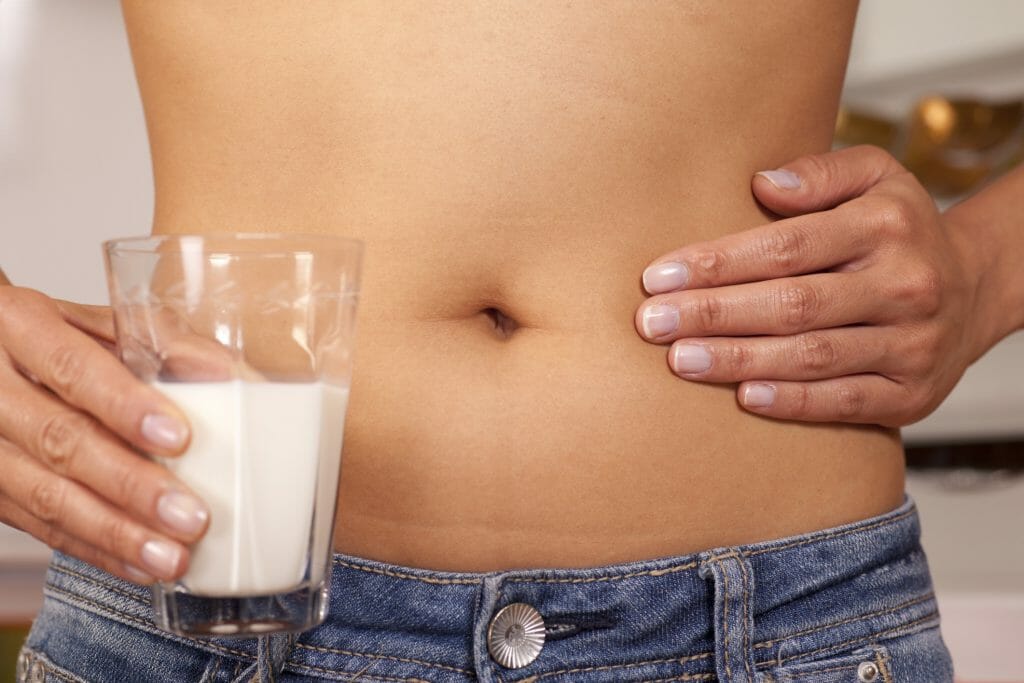
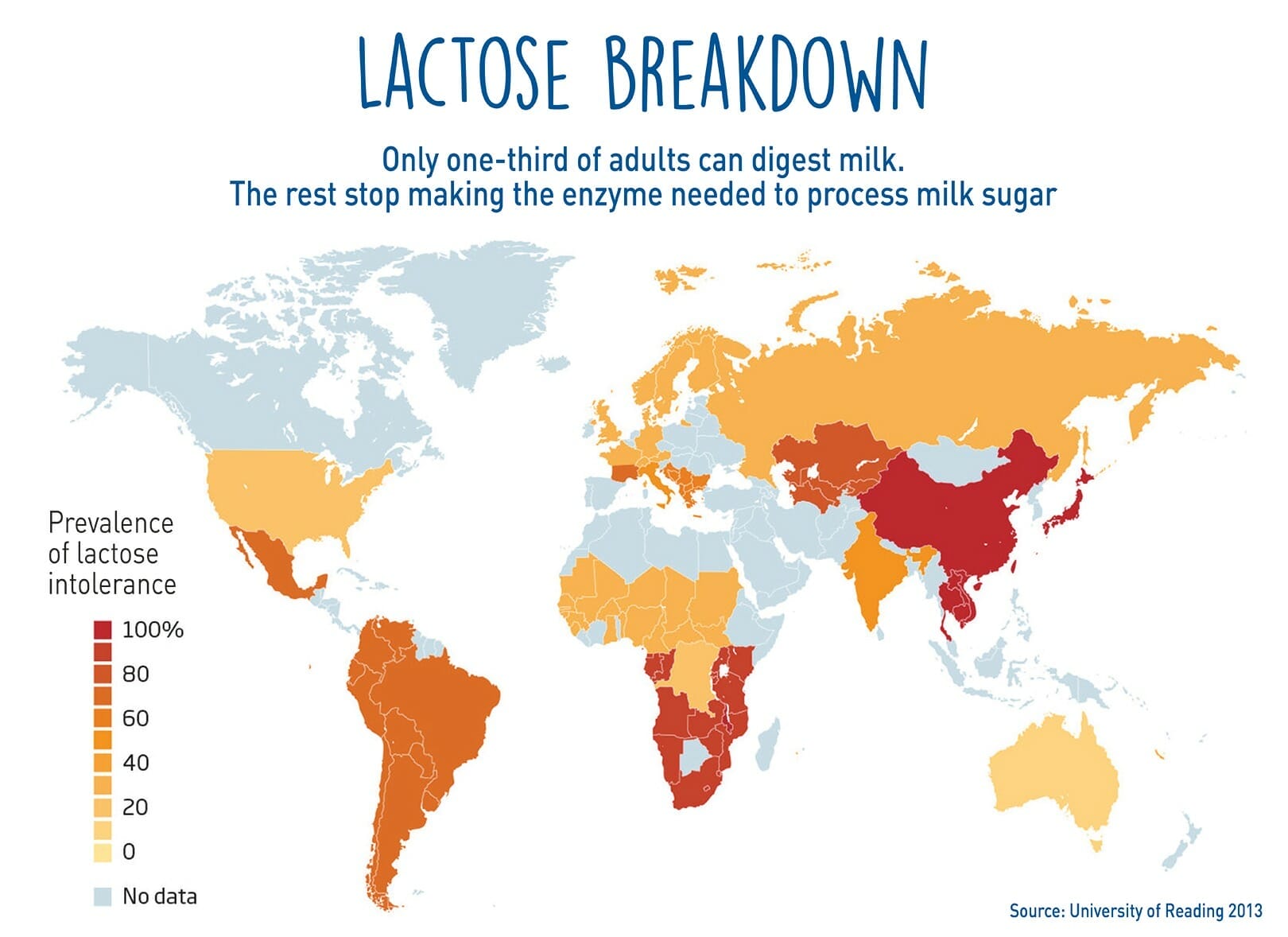
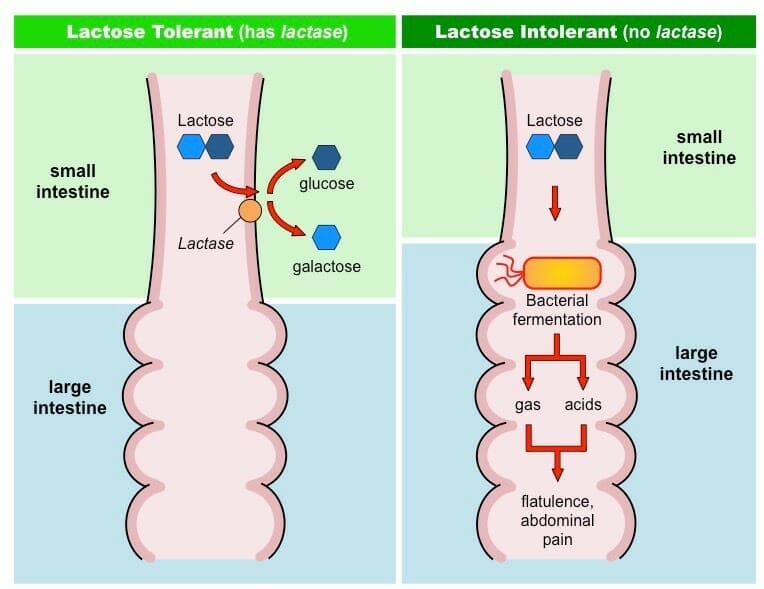


Thank you very much! I have decided to prevent from taking dairy products! I understand that they increase the blood sugar levels! ??
So many people all over the world consume dairy products, are all of them liable to get sick?
Nutrition and the development of chronic diseases can likely not be pinned so a single type of food (with the exception of seed oils, maybe) but I believe that most dairy products consumed today (i.e., those containing casein beta A1) contribute to the global health crisis. Just look at the rates of metabolic diseases in most countries, especially developed countries.
I have good news: studies indicates that beta-casomorphin-7 (and other casomorphins) are decomposed in yoghurt (and therefore plausibly in kefir as well) .
Full fat Turkish or Greek yoghurt is one of the only things I really enjoy and rely on for gut bacteria, and now this article kills this :(
Hi Emin,
I’ve never had Turkish yoghurt but old-fashioned Greek is made from goat milk and is much better than the American version (Greek-style). That’s because goat milk has the better (non-inflammatory) Casein Beta A2. So if the yoghurt you like is made with goat milk and you can handle the milk sugar, I would keep eating it.
Cheers,
Michael
Thank you Michael, appreciate your response.
Yes Turkish one is like the Greek one
(despite the seeming political animosity between us, our cuisines, for one, is almost identical :) ).
Thank you for this infor.I enjoy all your blogs. Please keep them coming
I love Malk almond milk, but New Barn gives me terrible diarrhea and it smells foul!
Hi Jean,
you might have had a bad batch :)